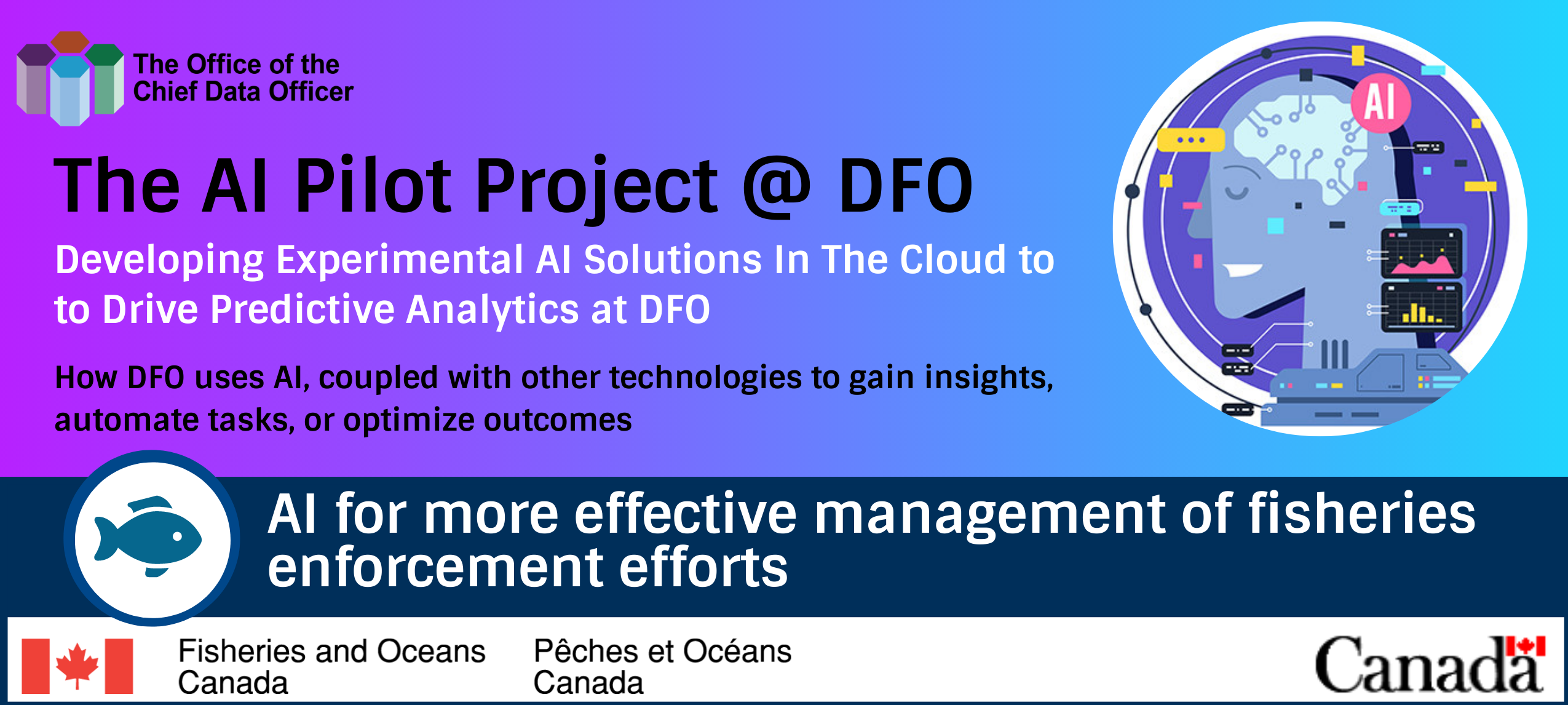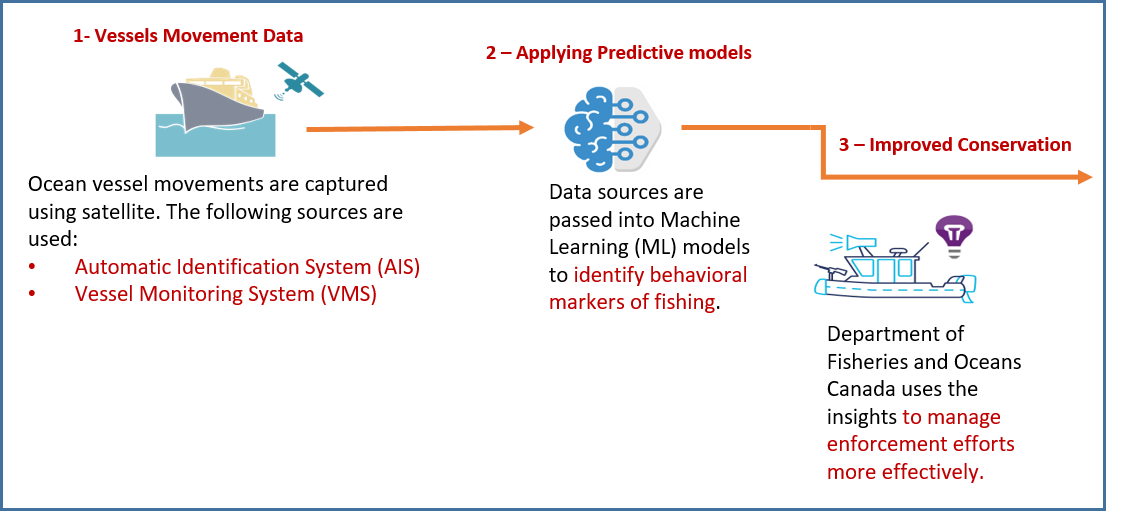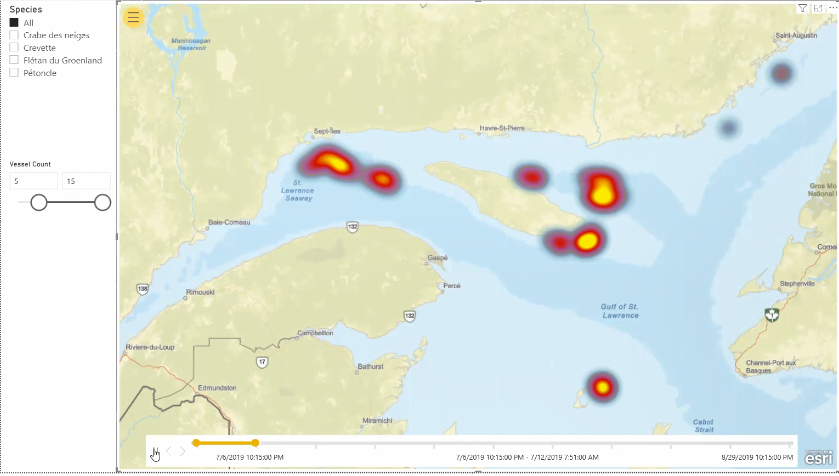Difference between revisions of "AI test"
| Line 25: | Line 25: | ||
Supported by the 2020 – 2021 Results Fund, a Proof of Concept (POC) was developed for the automated detection of vessel fishing activity using an AI model. The resulting predictive model takes vessel movement tracks as input and outputs the vessel tracks annotated with its activity i.e. fishing or not-fishing, as illustrated below. The model uses features such as vessel speed standard deviation, course standard deviation, and fishing gear type to detect vessel activity. | Supported by the 2020 – 2021 Results Fund, a Proof of Concept (POC) was developed for the automated detection of vessel fishing activity using an AI model. The resulting predictive model takes vessel movement tracks as input and outputs the vessel tracks annotated with its activity i.e. fishing or not-fishing, as illustrated below. The model uses features such as vessel speed standard deviation, course standard deviation, and fishing gear type to detect vessel activity. | ||
| − | + | [[File:FishingDetectionModel2.png|alt=|center|thumb|767x767px|'''<small>The results of applying the predictive model for detecting fishing behaviour. The left image shows the vessel trip before applying the model. The right image shows the vessel trip annotated with fishing activity. Green points indicate fishing points.</small>''']] | |
| − | [[File: | ||
| − | |||
The insight gained from the predictive model is then combined with other data sources, such as fisheries management areas and license conditions to detect non-compliance with fisheries regulations. An example of such functionality is shown below. | The insight gained from the predictive model is then combined with other data sources, such as fisheries management areas and license conditions to detect non-compliance with fisheries regulations. An example of such functionality is shown below. | ||
| + | [[File:Ex-non2.png|alt=|center|thumb|800x800px|<small>'''The left image: an example of compliance: a fishing trip adhering to the fishing zone restriction.'''</small> | ||
| − | + | '''<small>The right image: an example of non-compliance: a fishing trip fishing outside its allowable zones.</small>''']] | |
| + | The functionality of the POC is further complemented by developing another predictive model to find spatial hot spots of fishing activities. For example, a heat map of highly active fishing areas across all Quebec region fisheries is shown below. | ||
[[File:Hotspot.png|center|frameless|536x536px]] | [[File:Hotspot.png|center|frameless|536x536px]] | ||
Revision as of 11:57, 22 December 2021
Computers can learn to spot fishing activities from vessel movements data captured by satellite receivers. DFO has developed a predictive model to detect fishing activities based on vessel speed, course, and fishing gear type. Another predictive model is developed to detect the main areas of fishing activities. The insights gained from both models can give Canadian fishery officers a bird’s eye view over what is happening on the water leading to more effective management of enforcement efforts.
The Challenge
Illegal, Unreported, and Unregulated fishing (IUU) has many negative environmental, economic, and social impacts.
- IUU is considered a major contributor to declining fish stocks and marine habitat destruction. It is estimated that one in every five fish sold is caught illegally. This represents up to 26 million tonnes of fish caught annually, valued at between $10 to $23 billion [1].
- Hotspot areas for IUU can lead to higher amounts of ghost gear as vessels fishing illegally are more likely to abandon or lose their gear. Ghost fishing gear is considered one of the biggest threats to our oceans leading to more marine pollution which can be fatal to fish, marine mammals, and other marine life [2] .
- This is not only about ensuring the sustainability of our oceans but also about ensuring the safety of DFO fishery officers. Incidents of violence against DFO fishery officers are reported every year as are other forms of criminal activity taking place under the guise of fishing such as drug or human trafficking.
Canadian fishery officers are heavily present on the water, in the air, and in port to monitor and inspect fishing activities. Given how large our oceans are, It is hard for DFO fishery officers to track and react to IUU fishing activities. Using only this heavy presence to investigate fishing activities is an expensive and time-intensive process.
The Solution
Vessel tracking data such as Automatic Identification System (AIS) data and Vessel Monitoring System (VMS) data can provide insight into vessel movements. AI algorithms can analyze vessel movements data to reveal patterns of fishing activities and behavior. The main idea is that vessel speed and course can be useful indicators to identify behavioral markers of fishing. Eventually, the goal is to create a Maritime E-Surveillance System, powered by AI, to support maritime surveillance of fishing activities/vessel activities. Such a system can give Canadian fishery officers a bird’s eye view over what is happening on the water and provide them with the required insights enabling them to manage effectively their enforcement efforts. The diagram shows the high-level overview of such a system.
Supported by the 2020 – 2021 Results Fund, a Proof of Concept (POC) was developed for the automated detection of vessel fishing activity using an AI model. The resulting predictive model takes vessel movement tracks as input and outputs the vessel tracks annotated with its activity i.e. fishing or not-fishing, as illustrated below. The model uses features such as vessel speed standard deviation, course standard deviation, and fishing gear type to detect vessel activity.
The insight gained from the predictive model is then combined with other data sources, such as fisheries management areas and license conditions to detect non-compliance with fisheries regulations. An example of such functionality is shown below.
The functionality of the POC is further complemented by developing another predictive model to find spatial hot spots of fishing activities. For example, a heat map of highly active fishing areas across all Quebec region fisheries is shown below.
In the end, the insights gained from both models can give Canadian fishery officers a bird’s eye view over what is happening on the water leading to more effective management of enforcement efforts.





